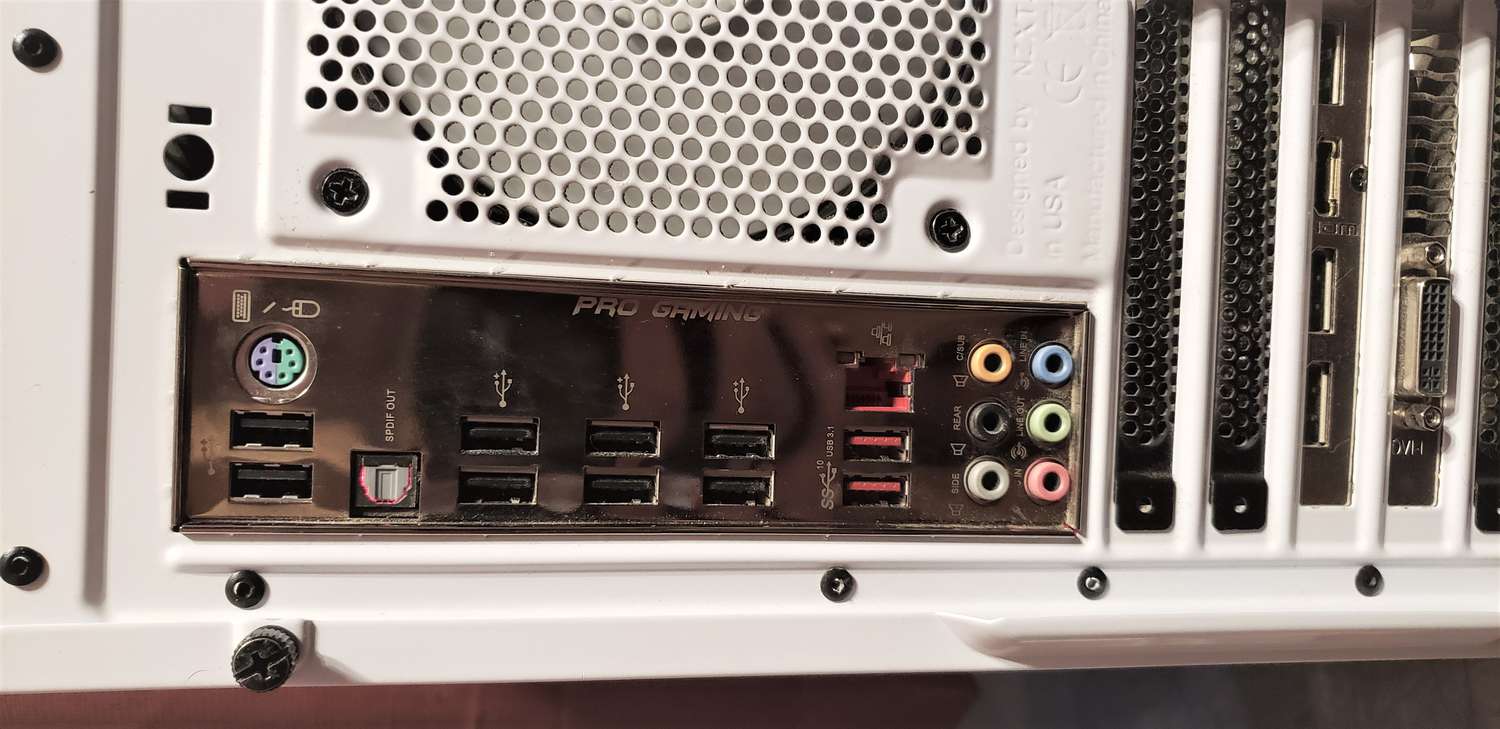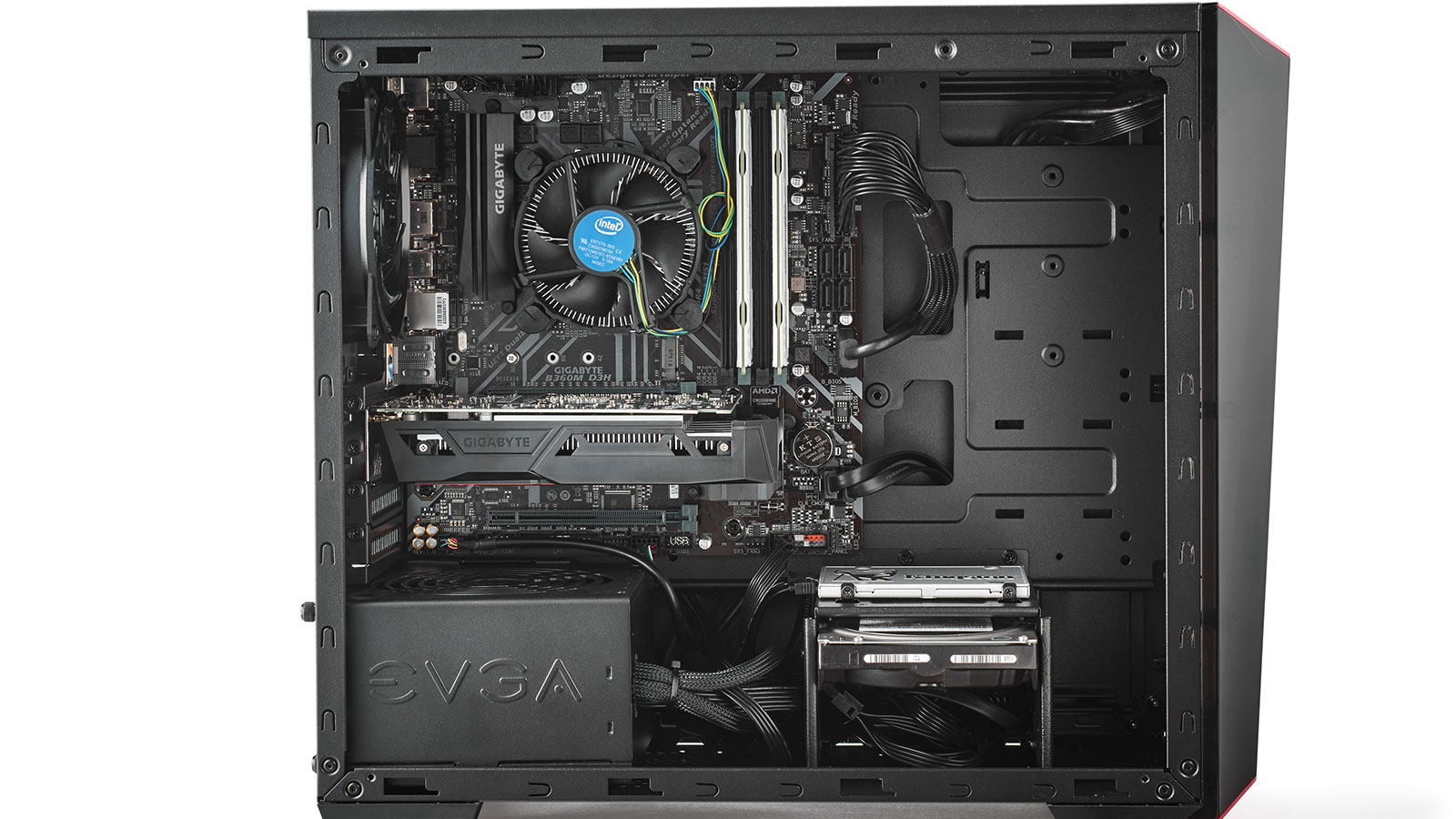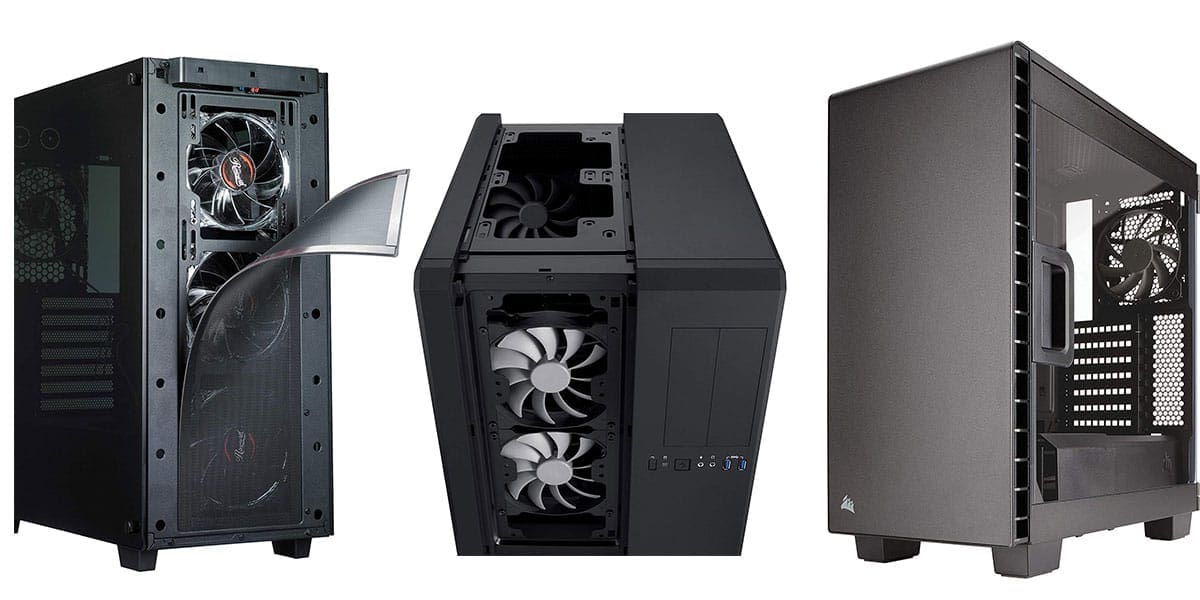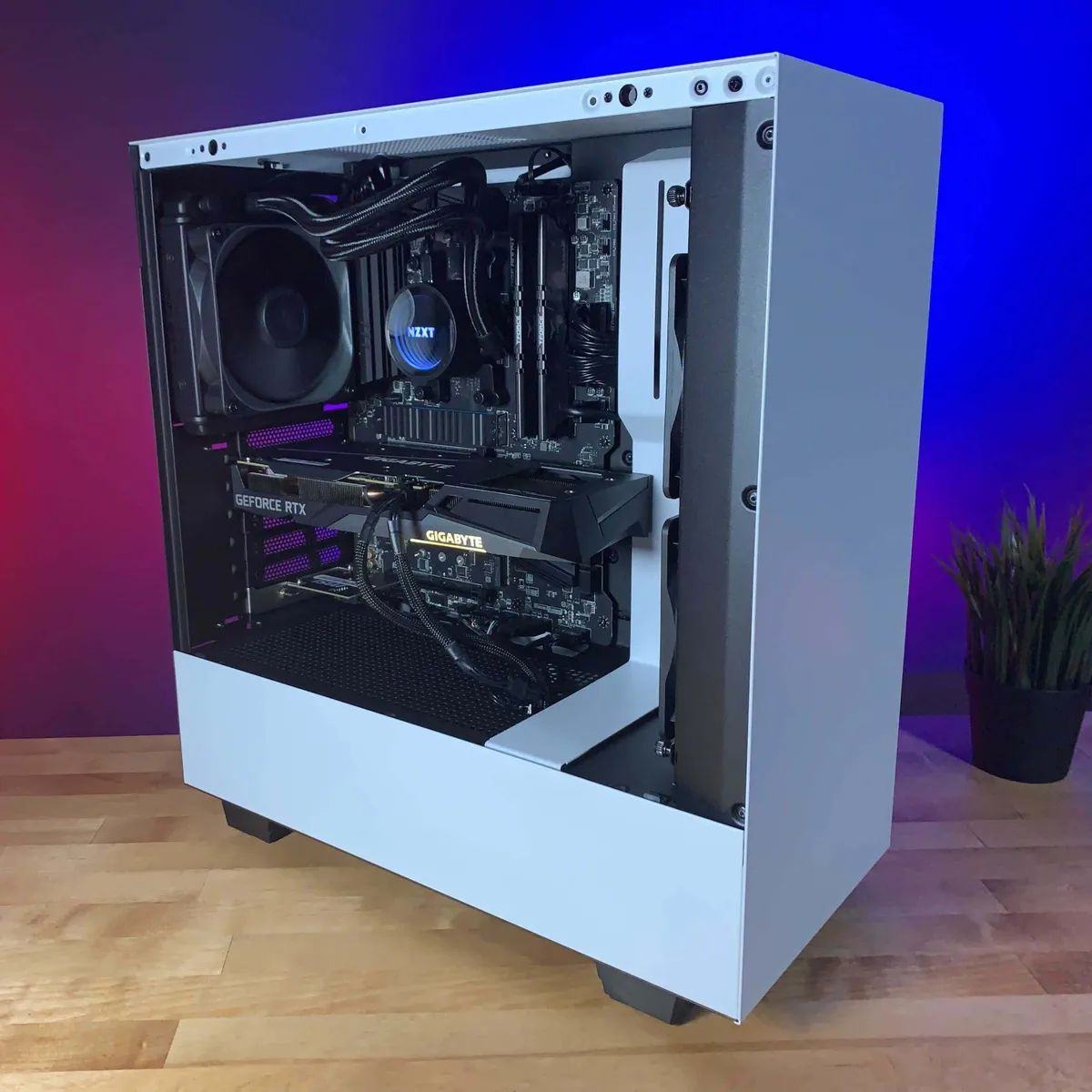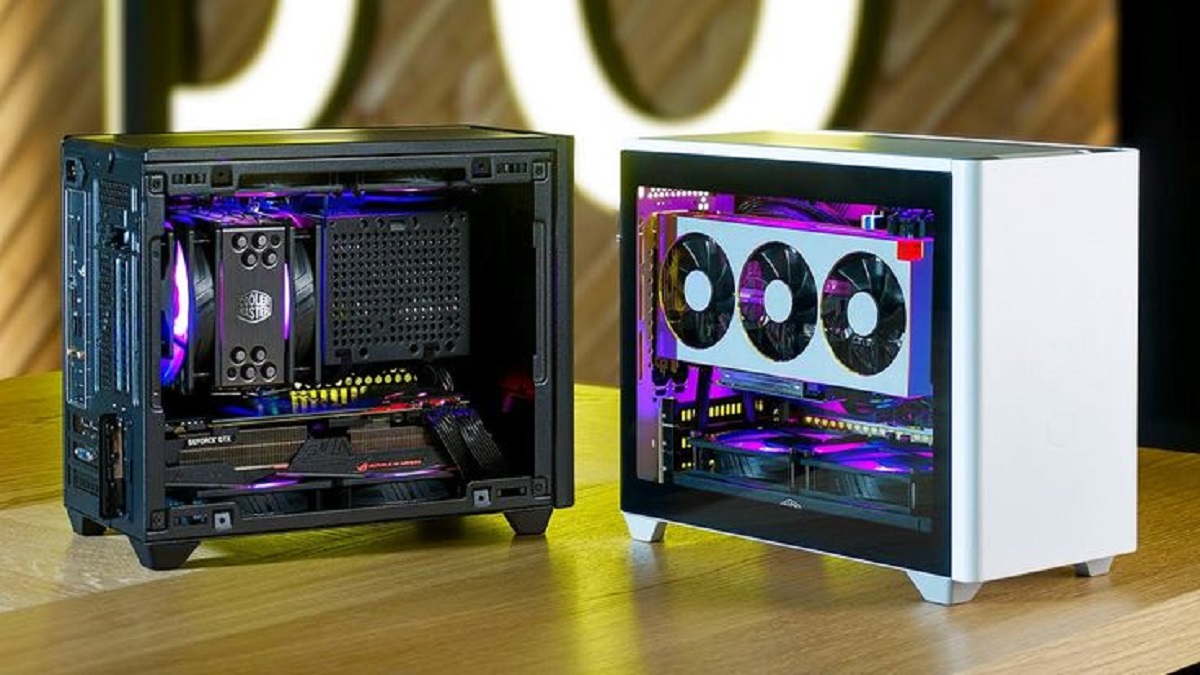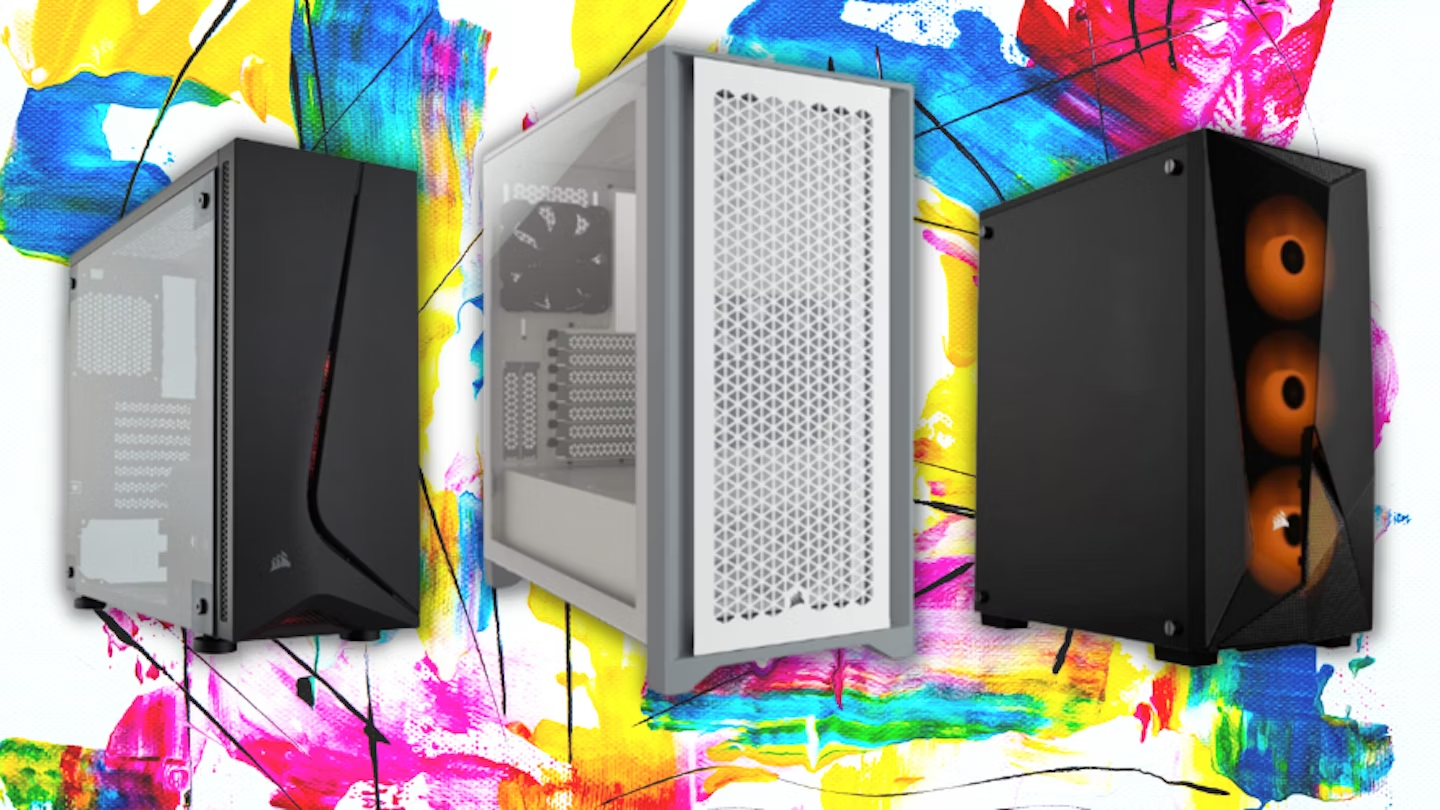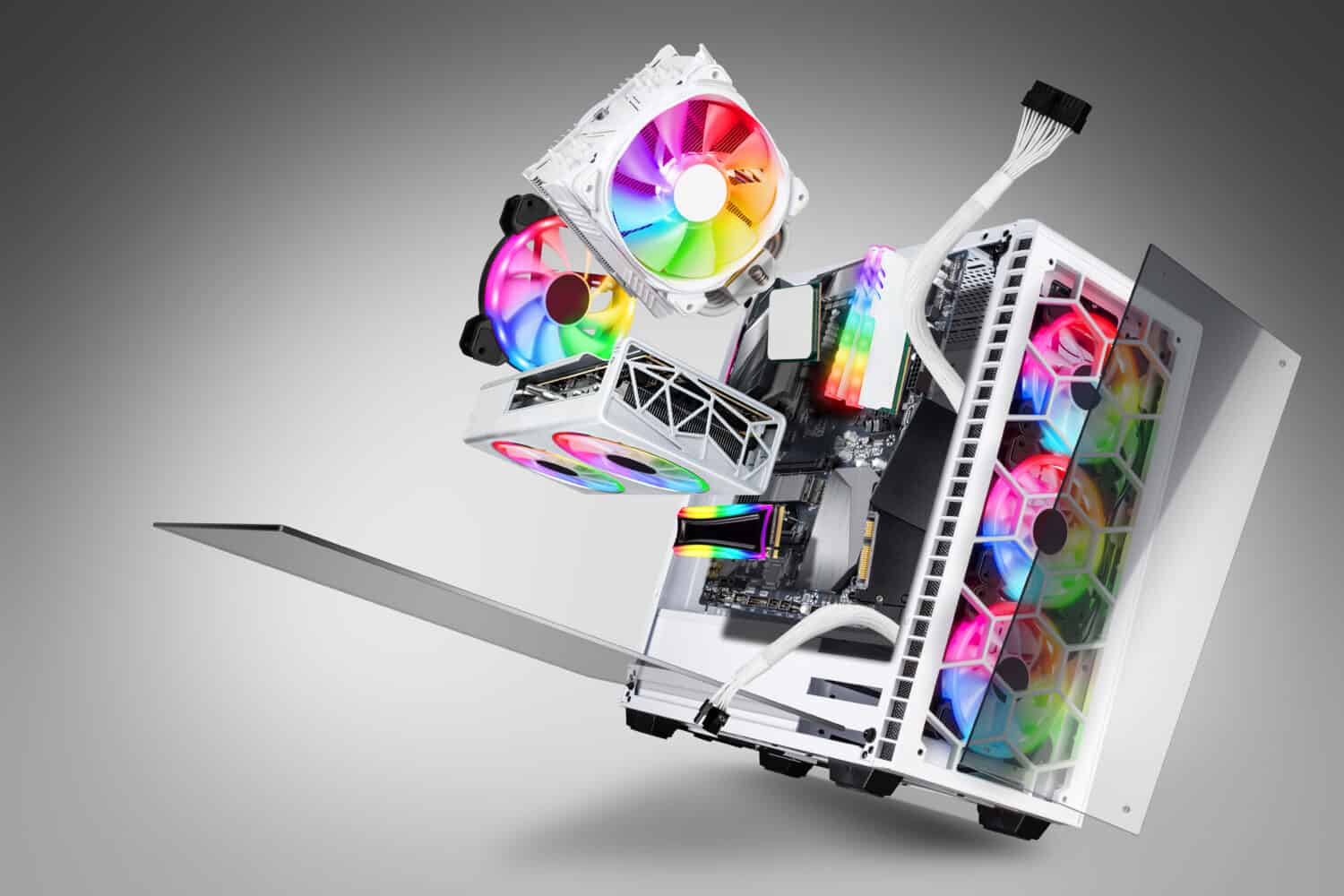Introduction
USB ports have become an essential component of modern PC cases. These versatile connectors allow you to connect a wide range of devices to your computer, including keyboards, mice, flash drives, and external hard drives. Having multiple USB ports on your PC case brings convenience and flexibility, as you can easily plug in and use multiple devices simultaneously without the need for additional hubs or adapters.
In this article, we will delve into the world of USB ports on PC cases and explore the benefits of having multiple ports, the different types of USB ports available, and the typical number of USB ports you can expect to find on a PC case. We will also discuss important factors to consider when choosing a PC case with USB ports, as well as provide insights on how to upgrade or expand USB ports if needed. Finally, we will touch upon common issues that may arise with USB ports on PC cases and offer some troubleshooting tips.
Whether you’re a casual user looking to connect a few devices or a power user with a multitude of peripherals, understanding the functionality and capacity of USB ports on your PC case is crucial. So, let’s dive in and discover everything you need to know about USB ports on PC cases, and how to make the most of this important component of your computer setup.
Benefits of Having Multiple USB Ports
Having multiple USB ports on your PC case offers several advantages and enhances the functionality of your computer setup. Here are some key benefits:
- Convenience: The primary benefit of having multiple USB ports is the convenience it brings. You can connect and use multiple devices simultaneously without the need for additional USB hubs or adapters. Whether you need to charge your smartphone, transfer files from a flash drive, or connect multiple peripherals, having multiple USB ports allows you to do it all without constantly swapping cables.
- Flexibility: Multiple USB ports on your PC case give you the flexibility to connect a variety of devices. From keyboards and mice to external hard drives and webcams, you can easily expand the capabilities of your computer setup. Whether you’re a gamer, a content creator, or a professional, the ability to connect multiple devices simultaneously can greatly enhance your productivity and overall user experience.
- Compatibility: USB ports are widely supported by virtually all devices. Having multiple USB ports ensures that you can connect devices regardless of their compatibility. This not only eliminates the need for specialized connectors but also allows for seamless integration of a wide range of peripherals into your computer setup.
- Accessibility: When USB ports are easily accessible on the front or top panel of your PC case, it becomes more convenient to plug in and disconnect devices. This is particularly helpful if you frequently connect and disconnect devices or if you have limited access to the rear ports of your computer.
- Future-Proofing: As technology advances, the importance of USB connectivity continues to grow. Having multiple USB ports ensures that your PC case remains compatible with future devices and their evolving connectivity standards. This can save you the hassle and expense of upgrading or replacing your PC case in the future.
Having multiple USB ports on your PC case offers convenience, flexibility, compatibility, accessibility, and future-proofing benefits. By providing ample connectivity options, multiple USB ports empower you to make the most of your computer peripherals and enhance your overall computing experience.
Understanding the Different Types of USB Ports
USB ports come in various types, each providing different levels of functionality and speed. It’s important to understand the different types of USB ports to ensure compatibility with your devices and optimize their performance. Here are the most common types:
- USB 2.0: USB 2.0 ports are the most basic and widely available type. They support data transfer rates of up to 480 Mbps (megabits per second) and provide sufficient speed for connecting standard peripherals like keyboards, mice, and printers. They are typically represented by black or white connectors.
- USB 3.0: USB 3.0 ports, also known as “SuperSpeed USB,” offer faster data transfer rates than USB 2.0. They provide data transfer speeds of up to 5 Gbps (gigabits per second), which is ten times faster than USB 2.0. USB 3.0 ports are backward compatible, meaning they can connect with USB 2.0 devices but at lower speeds. These ports are usually denoted by blue connectors.
- USB 3.1 Gen 1: USB 3.1 Gen 1 ports, also referred to as “USB 3.0 with rebrand,” have the same speed as USB 3.0 ports. They offer data transfer rates of up to 5 Gbps. USB 3.1 Gen 1 ports are typically identified by blue connectors, just like USB 3.0.
- USB 3.1 Gen 2: USB 3.1 Gen 2 ports, also known as “SuperSpeed+ USB,” provide faster data transfer speeds compared to USB 3.0 and USB 3.1 Gen 1. They offer data transfer rates of up to 10 Gbps, effectively doubling the speed of USB 3.0. USB 3.1 Gen 2 ports are usually represented by red or yellow connectors.
- USB Type-C: USB Type-C is a versatile and reversible connector, capable of supporting multiple protocols, including USB 3.1 Gen 1, USB 3.1 Gen 2, Thunderbolt 3, DisplayPort, and more. USB Type-C ports provide fast data transfer speeds and support charging, video output, and peripheral connections. Their compact design and universal compatibility make them increasingly popular on modern PC cases.
Understanding the different types of USB ports can help you determine the compatibility of your devices and optimize their performance. When choosing a PC case, it’s essential to consider the types and number of USB ports it offers, ensuring they align with the requirements of your devices and future-proof your setup.
How Many USB Ports Does a PC Case Typically Have?
The number of USB ports on a PC case can vary depending on the model and manufacturer. While there is no fixed standard, most PC cases tend to offer a sufficient number of USB ports to accommodate common user needs. The typical range is anywhere from 2 to 4 USB ports on the front or top panel of the case.
Mid-range and higher-end PC cases often provide additional USB ports on the rear panel, with the number varying between 2 to 6 ports. These rear ports are typically used for connecting devices that require a more permanent connection, such as external hard drives or USB peripherals that aren’t frequently disconnected.
The distribution of USB ports on a PC case can also vary. Some cases may feature all USB ports on the front panel for easy accessibility, while others may have a combination of front and rear ports for convenience and flexibility.
In recent years, with the increasing popularity of USB Type-C technology, many modern PC cases are starting to incorporate USB Type-C ports alongside traditional USB 2.0, USB 3.0, and USB 3.1 Gen 2 ports. USB Type-C ports offer fast data transfer speeds, versatile connectivity options, and the convenience of a reversible connector.
When choosing a PC case, consider your specific needs and the number and type of devices you typically use. If you have several peripherals or frequently use external storage devices, you may want to opt for a case with more USB ports to accommodate your requirements. Additionally, if you have devices that specifically require USB 3.1 Gen 2 or USB Type-C connectivity, ensure that the case includes these ports.
While the number of USB ports on a PC case is an important consideration, it’s worth noting that you can always augment the number of ports by using external USB hubs or expansion cards. These solutions allow you to connect multiple devices through a single USB port and provide added flexibility for expanding your connectivity options.
In summary, the number of USB ports on a PC case typically ranges from 2 to 4 on the front or top panel, with additional ports available on the rear panel. The inclusion of USB Type-C ports has become increasingly common in modern cases. Remember to consider your specific needs and the types of devices you use when choosing a PC case to ensure it provides an adequate number and variety of USB ports to meet your requirements.
Factors to Consider When Choosing a PC Case with USB Ports
When selecting a PC case with USB ports, there are several important factors to consider. These factors will help ensure that the case meets your needs and provides optimal convenience and functionality. Here are some key considerations:
- Number and Type of USB Ports: Assess the number and type of USB ports offered by the PC case. Consider how many devices you typically connect and whether you require specific USB standards like USB 3.1 Gen 2 or USB Type-C. Ensure that the case provides an adequate number and variety of ports to accommodate your devices.
- Accessibility and Placement: Determine the placement of the USB ports on the case. Front or top-panel USB ports offer easy accessibility for frequently connected devices, while rear ports are more suited for devices that require a more permanent connection. Ensure that the port placement aligns with your usage preferences and convenience.
- Internal Header Support: Check if the PC case has internal USB headers that connect to the motherboard. This allows for additional USB ports to be added internally, expanding your connectivity options. Internal headers may be necessary if you plan on installing a front-panel USB hub or utilizing other internal USB peripherals.
- Build Quality and Design: Consider the overall build quality and design of the PC case. Look for durable materials, solid construction, and well-designed cable management solutions. A well-constructed case will ensure longevity and reduce the risk of port failures or issues arising from poor manufacturing.
- Aesthetics: Consider the aesthetic appeal and compatibility of the PC case with your overall setup. Look for a case that matches your preferred style and blends seamlessly with your other components. USB port positioning and illumination can also contribute to the overall visual appeal of the case.
- Expandability: Assess the case’s potential for future expansion. Determine if there is sufficient space to add additional USB hubs or expansion cards if needed. This can be particularly important if you anticipate adding more peripherals or require specific USB connectivity for newer devices down the line.
- Affordability: Evaluate the price of the PC case in relation to its features and build quality. Set a budget and look for a case that offers good value for money. While it’s important to consider your budget, remember that investing in a reliable and well-equipped case can save you future expenses or frustrations.
Before making a final decision, read reviews, check compatibility with your motherboard’s USB header specifications, and consider any specific needs or preferences you may have. By carefully considering these factors, you can select a PC case with USB ports that not only fulfills your current requirements but also offers room for future expansion and enhances the overall functionality and convenience of your computer setup.
Upgrading or Expanding USB Ports on Your PC Case
If you find yourself in need of additional USB ports on your PC case or if you want to upgrade to faster USB standards, there are several options available to you. Here are some ways you can upgrade or expand the USB ports on your PC case:
- Internal Expansion Cards: One option is to install an internal USB expansion card. These cards can be inserted into an available PCI or PCIe slot on your motherboard, providing additional USB ports. They come in various configurations, including USB 3.0, USB 3.1, and USB Type-C, allowing you to upgrade to faster transfer speeds and accommodate specific device requirements.
- Front-Panel USB Hubs: If your PC case has internal USB headers available, you can also install a front-panel USB hub. This allows you to add more USB ports on the front or top panel of your case, providing easy accessibility for connecting devices. Front-panel USB hubs come in different sizes and configurations, allowing you to choose the number and type of ports that suit your needs.
- External USB Hubs: An external USB hub is a simple and convenient solution for expanding the number of USB ports. These hubs connect to a single USB port on your PC case and provide multiple additional ports for connecting devices. External USB hubs are available in various configurations, including USB 2.0, USB 3.0, and USB Type-C, and can be a cost-effective way to accommodate multiple devices.
- USB Port Adapters: USB port adapters allow you to convert one type of port into another. For example, if your PC case only has USB Type-C ports, but you have devices that require USB Type-A connections, you can use a USB Type-C to Type-A adapter to connect them. Similarly, if you need to convert a USB Type-A port to a USB Type-C port, you can use a USB Type-A to Type-C adapter. These adapters provide flexibility and enable compatibility between different USB standards.
- Upgrade or Replace Your PC Case: If your current PC case does not have the desired number or type of USB ports and you require more extensive expansion, you may consider upgrading or replacing your PC case altogether. Look for a case that offers the desired USB port configuration, including the number, type, and placement of ports. Make sure to consider other factors such as build quality, design, and compatibility with your components when selecting a new case.
Before upgrading or expanding USB ports on your PC case, ensure compatibility with your motherboard and check the available internal headers or expansion slots. Additionally, consider your specific needs, budget, and long-term requirements to determine the most suitable solution for expanding your USB connectivity.
Remember to follow proper installation procedures and guidelines provided by the manufacturers of the expansion cards, hubs, or adapters. By expanding or upgrading your USB ports, you can customize your PC setup to meet your growing needs and enhance the functionality and versatility of your computer system.
Common Issues with USB Ports on PC Cases
While USB ports on PC cases provide convenience and connectivity, they can sometimes experience issues that affect their functionality. Understanding common issues can help you troubleshoot and resolve problems effectively. Here are some of the most common issues with USB ports on PC cases:
- Connectivity Problems: One common issue is when USB ports fail to establish a connection with devices. This can be due to loose connections or damaged ports. Ensure that the cables and devices are properly inserted into the ports and try connecting them to different ports to isolate the issue.
- Power Limitations: USB ports have a limited power output, and connecting power-hungry devices may cause issues. If you experience problems with devices not receiving enough power, consider using a powered USB hub or connecting the device directly to a rear USB port that often provides more power.
- Driver Issues: Outdated or incompatible USB drivers can lead to port malfunctions. Ensure that you have the latest drivers installed for your motherboard or USB controller. You can usually find these drivers on the manufacturer’s website or through device management software.
- Device Recognition Problems: Sometimes, USB ports fail to recognize connected devices, preventing them from functioning properly. This can be due to driver conflicts, outdated firmware on the device, or issues with the USB port itself. Try connecting the device to a different USB port or updating the device’s firmware to resolve the problem.
- Physical Damage: Physical damage to the USB ports or the connectors on devices can cause connectivity problems. Inspect the ports for any visible signs of damage, such as bent pins or debris. If you identify physical damage, consult a professional or consider replacing the affected component.
- Driver Conflicts: Sometimes, conflicting drivers from other USB devices or incompatible software can cause issues with USB ports. Uninstalling or disabling any unnecessary drivers or software that may be interfering with USB functionality can help resolve the problem.
- Faulty USB Controller: In rare cases, the USB controller on the motherboard may have a hardware issue, resulting in malfunctioning USB ports. If you have exhausted all other troubleshooting steps and continue to experience issues with multiple USB ports, contacting the manufacturer’s support or seeking professional assistance may be necessary.
When troubleshooting USB port issues, it’s important to follow standard troubleshooting steps, such as restarting your computer, checking for updates, and testing different devices. Additionally, consulting the documentation provided by your motherboard or PC case manufacturer can provide specific guidance for troubleshooting USB port problems.
Remember, if you are uncomfortable performing hardware-related troubleshooting, it’s always best to seek professional assistance to avoid causing further damage to your PC components.
By being aware of these common issues and following proper troubleshooting steps, you can effectively address USB port problems and ensure reliable connectivity for your devices.
Conclusion
USB ports are a vital component of modern PC cases, offering convenience, flexibility, and compatibility for connecting various devices to your computer. Understanding the different types of USB ports, the typical number of ports on PC cases, and the factors to consider when choosing a case with USB ports can help you optimize your computer setup and enhance your overall user experience.
Having multiple USB ports on your PC case allows you to connect and use multiple devices simultaneously without the need for additional accessories. It brings convenience, flexibility, and accessibility to your computer setup, empowering you to seamlessly integrate peripherals and optimize your productivity.
Consider the number and type of USB ports on a PC case, as well as their placement and accessibility, when making a purchasing decision. Ensure that the case satisfies your current device connectivity requirements while also providing room for future expansion. Factors such as build quality, design, aesthetics, and affordability should also be taken into account.
If you find yourself needing more USB ports or want to upgrade to faster USB standards, options like internal expansion cards, front-panel or external USB hubs, and port adapters can cater to your specific needs. Always follow proper installation procedures and consult the documentation provided by manufacturers to ensure compatibility and avoid hardware issues.
While USB ports on PC cases are typically reliable, common issues such as connectivity problems, power limitations, driver conflicts, and physical damage can occur. By understanding these common issues and following troubleshooting steps, you can effectively address and resolve USB port problems.
In summary, USB ports on PC cases play a crucial role in connecting and expanding your computer setup. By choosing a suitable PC case, understanding the different types of USB ports, and being aware of common issues, you can maximize the functionality and convenience that USB ports bring to your computing experience.







